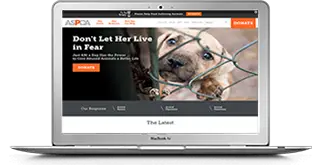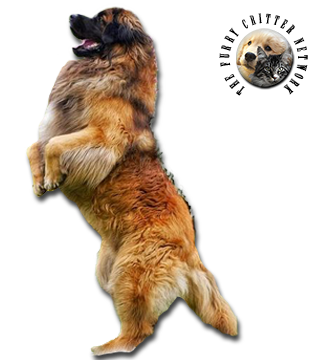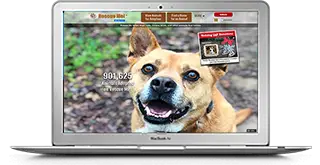Breed Standard
Head: Fairly narrow, longer than wide. Moderately domed skull. Moderate stop. Slightly aquiline nose bridge (like that of a ram). The muzzle is never pointed. Black, tight lips.
Ears: Set on high, drop, falling flat against the head.
Eyes: Medium size. Light to dark brown color.
Body: Slightly longer than tall. Powerful neck. Deep chest.
Tail: Very richly clad (brush). Carried half down, never too high or curled over the back.
Hair: Medium fine to coarse, thick, long, smooth, lying close to the skin. Presence of undercoat. Beautiful mane on the neck and forechest.
Coat: Lion-colored: fawn, gold yellow or reddish-brown with black mask. A small white spot on the forechest is permissible. Sable with a black overlay is also permissible. The collarettes, trousers (feathering on the back of the legs), culottes, and feathering on the tail may be lighter in color than the rest of the coat.
Size: Dog: 72 to 80 cm Bitch: 65 to 75 cm
Weight: 60 to 80 kg.
History
In the 1830s, Heinrich Essig, a dog breeder and seller and mayor of the town of Leonberg near Stuttgart in Baden-Wurttemberg, Germany, claimed to have created the Leonberger by crossing a female Landseer Newfoundland with a "barry" male from the Great St Bernard Hospice and Monastery (which would later create the Saint Bernard). Later, according to Essig, a Pyrenean Mountain Dog was added, resulting in very large dogs with the long, white coats that were the fashion for the time, and a pleasant temperament. The first dogs registered as Leonbergers were born in 1846 and had many of the prized qualities of the breeds from which they were derived. The legend is that the dogs were bred to be an homage to the lion in the town crest and coat-of-arms animal of Leonberg, the lion. The Leonberger dog became popular with several European royal households, including Napoleon II, Empress Elisabeth of Austria, the Prince of Wales, Otto Von Bismarck, Emperor Napoleon III, and Umberto I of Italy. Essig's claim of breeding the dog as described is disputed. Records from as early as 1585 may indicate the existence of Leonberger-type dogs; documents dating from 1601 held by the Metternich family describe similar dogs used to deter the theft of livestock. Either way, no doubt exists that Essig named and registered the breed first. A black-and-white engraving of the Leonberger was included in The Illustrated Book of the Dog by Vero Shaw. At the time, Essig's Leonbergers were denounced as an indifferent knockoff of a St. Bernard not a stable and recognized breed and a product of a popular fad or fashion for large and strong dogs, fomented in part by Essig's prodigious marketing skills (he gave dogs to the rich and famous).
The modern look of the Leonberger, with darker coats and black masks, was developed during the latter part of the 20th century by reintroducing other breeds, such as the Newfoundland. This was necessary because breeding stocks of the Leonberger were seriously affected by the two world wars. During World War I, reportedly, only five Leonbergers survived World War I and were bred until World War II when, again, almost all Leonbergers were lost. During the two world wars, Leonbergers were used to pull the ammunition carts, a service to the breed's country that resulted in the Leonbergers' near-destruction. Karl Stadelmann and Otto Josenhans are credited as the breed's saviors, bringing them back from almost extinction. Leonbergers today can have their ancestry traced to the eight dogs that survived World War II.
The Leonberger received American Kennel Club recognition as a member of the Working Group on January 1, 2010, alongside the Icelandic Sheepdog and the Cane Corso. It was the 167th breed to be recognized by the AKC.
Behavior
First and foremost a family dog, the Leonberger's temperament is one of its most important and distinguishing characteristics. Well socialized and trained, the Leonberger is self-assured, insensitive to noise, submissive to family members, friendly toward children, well composed with passersby, and self-disciplined when obliging its family or property with protection. Robust, loyal, intelligent, playful, and kindly, they can thus be taken anywhere without difficulty and adjust easily to a variety of circumstances, including the introduction of other dogs.
The Leonberger needs exercise and room to run. He does not like to be tied up or left alone. Weekly brushing is sufficient, except during the twice-yearly seasonal shedding, when more frequent brushing is required.
Function
Traditionally, Leonbergers were kept as farm dogs and were much praised for their abilities in watchdog and draft work. They were frequently seen pulling carts around the villages of Bavaria and surrounding districts. Around the beginning of the 20th century, Leonbergers were imported by the government of Canada for use as water rescue/lifesaving dogs. The breed continues in that role today, along with the Newfoundland, Labrador Retriever, and Golden Retriever; they are used at the Italian School of Canine Lifeguard. They have been used successfully as flock guard dogs.
Health
Leonbergers are strong, generally healthy dogs. Hip dysplasia, which devastates many large breeds, is largely controlled because of the effort of many breeders who actively screen their Leonbergers using X-rays evaluated by the Orthopedic Foundation for Animals and leave dysplastic specimens out of the gene pool, thereby reducing the risk of bone/joint problems. For over 20 years, breeders belonging to the Leonberger Club of America, which issued pedigrees for the Leonberger breed in America, adhered to many aspects of the German breeding program, whereby member kennels may only choose to breed dogs that were certified as having three generations free of hip dysplasia. As a likely result, the incidence of hip dysplasia in the breed was reduced to almost 10% and the occurrence of OFA-rated "Excellent" hips increased by over 60% in just 20 years. Current incidence rates of hip dysplasia in Leonbergers are likely around 13%. After 2010, when the Leonberger Club of America joined the American Kennel Club, the formerly strict breeding rules are no longer mandatory for all Leonbergers.
Though not common, Leonbergers do inherit and/or develop a number of diseases that range in their impact from mild to devastating. In addition to hip dysplasia, Leonbergers can inherit and/or develop heart problems, inherited Leonberger paralysis/polyneuropathy, osteosarcoma, hemangiosarcoma, osteochondrosis dissecans, allergies, digestive disorders, cataracts, entropion/ectropion eyelids, progressive retinal atrophy, perianal fistulas, and thyroid disorders. Though rumors persist of Leonbergers being more sensitive to anesthesia than other dog breeds, they are largely untrue. Leonbergers, like other large-breed dogs, require less dosage per pound of sedative than smaller breeds to yield the same effect. The Leonberger Health Foundation, a private nonprofit foundation whose sole mission is to support major researchers who are seeking to identify genetic markers for serious diseases that affect the breed, is currently focusing on osteosarcoma, hemangiosarcoma, and Leonberger polyneuropathy.
Longevity
Leonbergers in U.K. and U.S./Canada surveys had a median lifespan around 7 years, which is about 4 years less than the average purebred dog, but typical of similarly sized breeds. About 20% of Leonbergers in the surveys lived to 10 years or more. The oldest dogs in both surveys died at about 13. In France, the breed has a median lifespan of 8.75 years.
Serious diseases can affect the Leonberger—certain types of cancers are very common in the breed. Gastric dilatation volvulus, commonly called bloat, is another serious condition that affects many of the large and giant breed dogs, particularly those with deep chests. It causes the stomach to twist and can be fatal quite quickly. Adult Leonbergers should always be fed twice a day rather than one large meal to reduce the likelihood of bloat. Leonbergers are not alone in inheriting serious diseases, and according to the University of Sydney's LIDA taskforce, Leonbergers have relatively few health issues compared to other dog breeds.
In a 2004 U.K. Kennel Club survey, the most common causes of death were cancer (45%), cardiac disease (11%), and "unknown" (8.5%). In a 2000 U.S./Canada Leonberger Club of America survey, the most common causes of death were cancer (37%), old age (12%), cardiac disease (9%), and "sudden death" (8%).
Studies have indicated problems with inherited polyneuropathy in certain populations of Leonbergers and cataracts in dogs in the United Kingdom. A study of "Leonberger polyneuropathy" was published in 2014. Genetic testing is to be done through a protocol administered in North America by the University of Minnesota Veterinary Diagnostic Laboratory or Institute of Genetics, Vetsuisse Faculty, University of Bern, Bern, Switzerland.






